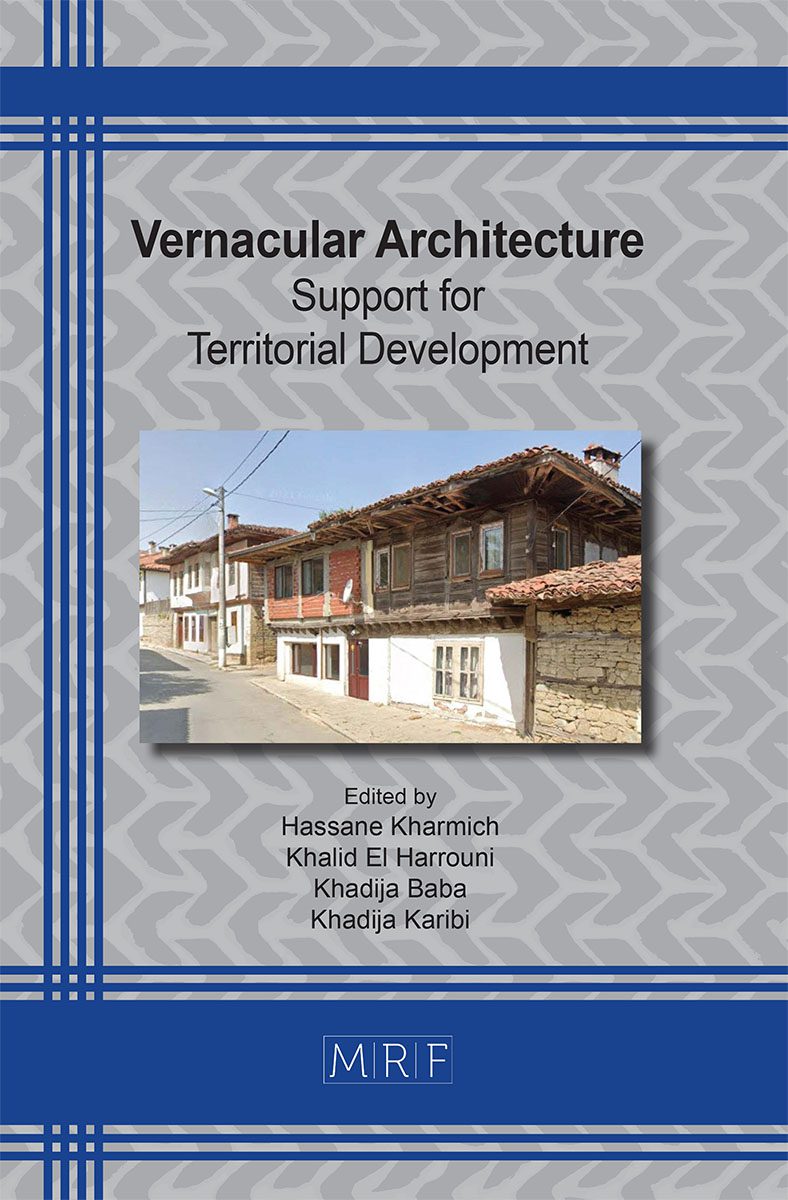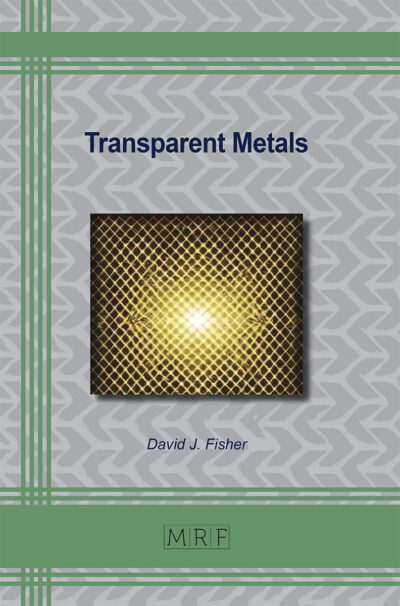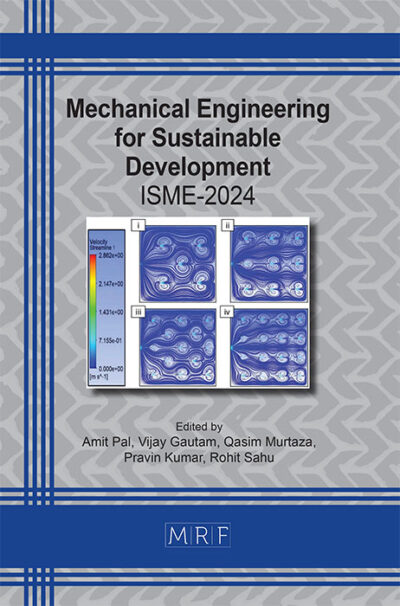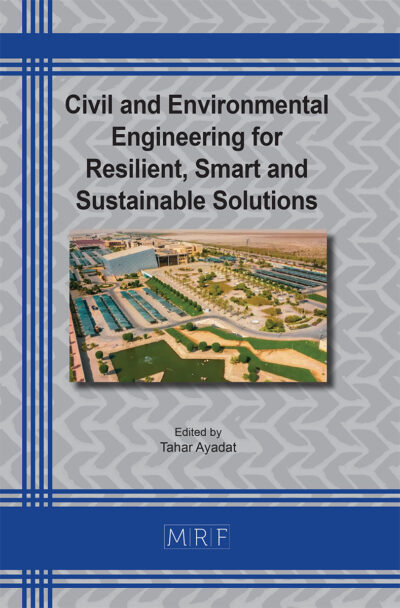The vernacular facade as a contemporary urban issue case of the Bâlima hotel in Rabat
BERDOUZ Karima, MESSOUS Ouafa, TLEMÇANI MEKKAOUI Nezha
Abstract. Moroccan vernacular architecture is much more than a simple object, it is a process of continuous evolution, where spatial, human, and temporal dimensions intersect. Anchored in its geographical and cultural context, it reflects the lifestyles, available materials, and ancestral techniques of a community. Vernacular architecture is not decoration, it is the result of an ingenious adaptation of man to his environment. Between 1912 and 1940, Morocco experienced a new period in designing public space [1,2,3] the urban facade became the main vector of a new image of the city, exposing the know-how of local crafts while opening up more to the public space as imagined by the administration of the French protectorate present in Morocco at this period. This movement of “staging” of architecture has sparked rich debates, between preservation of vernacular identity and adaptation to the demands of modernity. Architecture evolved, gradually abandoning traditional Moroccan styles to adopt more modern European influences. However, this transition also gave rise to an architectural movement specific to Morocco: the “Arabisance movement” [4], which attempted to create a “hybrid” architectural style, seeking to adapt Moroccan vernacular forms and details to European requirements. The study of the Bâlima hotel in Rabat, through the prism of its emblematic facade, invites us to reflect on the means of reconciling progress and preservation, of bringing the past and the present into dialogue to shape cities in the image of rich Moroccan traditions. The facade is not a simple object, but the reflection of an energy in constant metamorphosis, of an identity in perpetual reinvention. Our reflection will revolve around Moroccan vernacular architecture. Architecture perhaps never has truly completed form. It is becoming a perpetual movement, where matter and spirit constantly intertwine. The vernacular is a process in progress, a complex alchemy where spatial, human, and temporal dimensions combine. Vernacular architecture, in its very essence, embodies the most authentic expression of the constructive traditions and local know-how of a given region. Anchored in its geographical and cultural context, it reflects the lifestyles, available materials, and ancestral techniques specific to a community. Far from being a simple decoration, this vernacular architecture is the result of an ingenious adaptation of man to his environment, guided by practical, social, and aesthetic imperatives. Moroccan vernacular architecture was profoundly reinterpreted and reinvented to respond to the urban challenges of the pivotal period of the French Protectorate, between 1912 and 1940. This transition marked an important turning point in the way of thinking and shaping public space, confronting Moroccan vernacular architecture as new influences and aspirations. While the traditional medinas kept an introverted and intimate approach to housing [5], the urban facade of the new city became the main vector of a new image of the city, exposing local artisanal know-how while opening more onto public space. This movement of “staging” of architecture has sparked rich debates, between preservation of vernacular identity and adaptation to the demands of modernity. This period was marked by the arrival of French architects and town planners responsible for reorganizing urban space according to the principles of modern planning. Cities like Rabat, Casablanca, and Fez have seen the birth of new districts designed according to orthogonal plans, facade alignments [6], and public spaces inspired by Haussmannian town planning.
Keywords
Architecture, Vernacular, Urban Facade, Bâlima, Morocco
Published online 1/10/2025, 5 pages
Copyright © 2025 by the author(s)
Published under license by Materials Research Forum LLC., Millersville PA, USA
Citation: BERDOUZ Karima, MESSOUS Ouafa, TLEMÇANI MEKKAOUI Nezha, The vernacular facade as a contemporary urban issue case of the Bâlima hotel in Rabat, Materials Research Proceedings, Vol. 47, pp 98-102, 2025
DOI: https://doi.org/10.21741/9781644903391-11
The article was published as article 11 of the book Vernacular Architecture
![]() Content from this work may be used under the terms of the Creative Commons Attribution 3.0 license. Any further distribution of this work must maintain attribution to the author(s) and the title of the work, journal citation and DOI.
Content from this work may be used under the terms of the Creative Commons Attribution 3.0 license. Any further distribution of this work must maintain attribution to the author(s) and the title of the work, journal citation and DOI.
References
[1] LAFORGUE Adrien, l’architecture au Maroc, le miracle marocain La région de Rabat, Editions de la vérité marocaine, 1932.
[2] La pacification du Maroc, 1907 – 1934, J.LADREIT DELACHARRIERE, publications du Comité de l’Afrique française Paris 1936
[3] RIVET (D.), Lyautey et l’institution du protectorat français au Maroc 1912‐1925, Paris, 1996 Ed. L’Harmattan, Coll. Histoire et perspectives méditerranéennes, 267 p.
[4] Karima BERDOUZ, Le patrimoine colonial au Maroc. Le façadisme comme approche de sauvegarde, 244, 2022, ISBN : 978-2-14-027448-0.
[5] MHAMMEDI (M), KARIBI (K), BERDOUZ (K), HARATI (M), ALAGUI (F), An urban planning and modern architecture of the twentieth century in morocco: the construction of a capital, Rabat. International Journal of Civil, Structural, Environmental and Infrastructure Engineering Research and Development (IJCSEIERD), Vol. 8, Issue 5, Dec 2018, (p.p17-36).
[6] PINSON (D), EL HARROUNI (K), Deux Élie et deux patrimoines potentiels pour l’architecture de la seconde moitié du XXème siècle au Maroc? African and Mediterranean Journal of Architecture and Urbanism, Ecole Nationale d’Architecture, Rabat, 2021, pp.9-21.
[7] Karima BERDOUZ La construction de l’image de la ville, le rôle des acteurs locaux, cas de la ville de Rabat, Rabat 2015 mémoire de fin d’études pour l’obtention du diplôme des études supérieures en aménagement et urbanisme INAU, Rabat 2017.
[8] les archives des autorisations de construire aux services des archives, Commune de Hassan, Rabat.
[9] MHAMMEDI (M), KARIBI (K), BERDOUZ (K), Le patrimoine colonial marocain à l’épreuve du façadisme (1912-2012), Transversale n°3, ENSAP Bordeaux, 2018.
[10] RIVET (D.), Le Maroc de Lyautey à Mohammed V. Le double visage du protectorat, Paris, 1999 Ed. Denoel.












